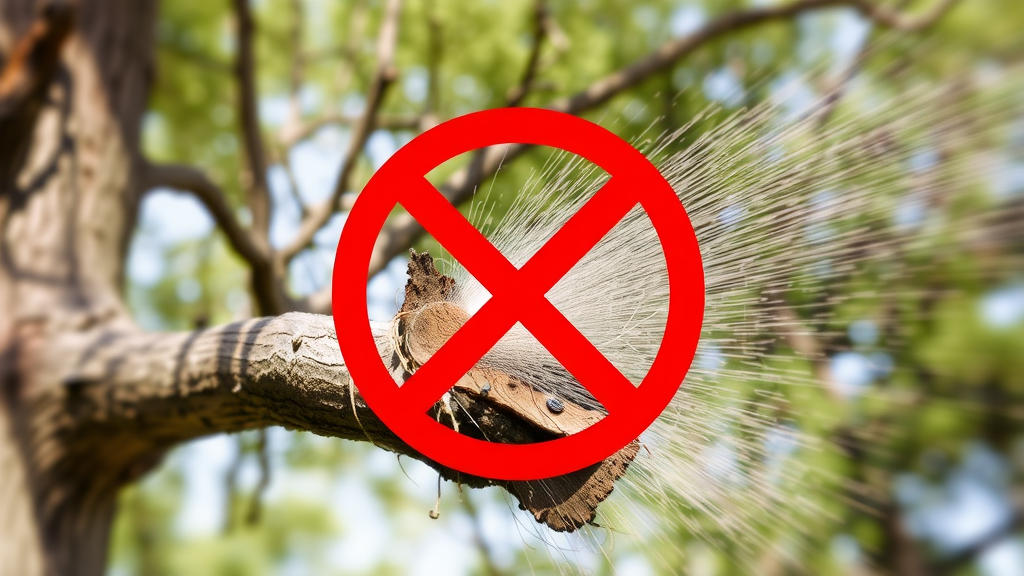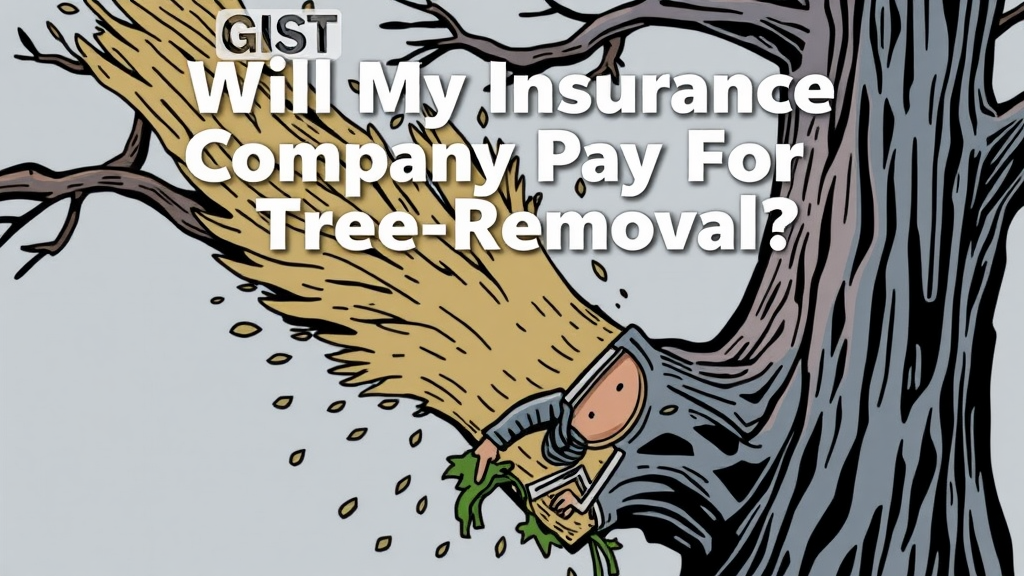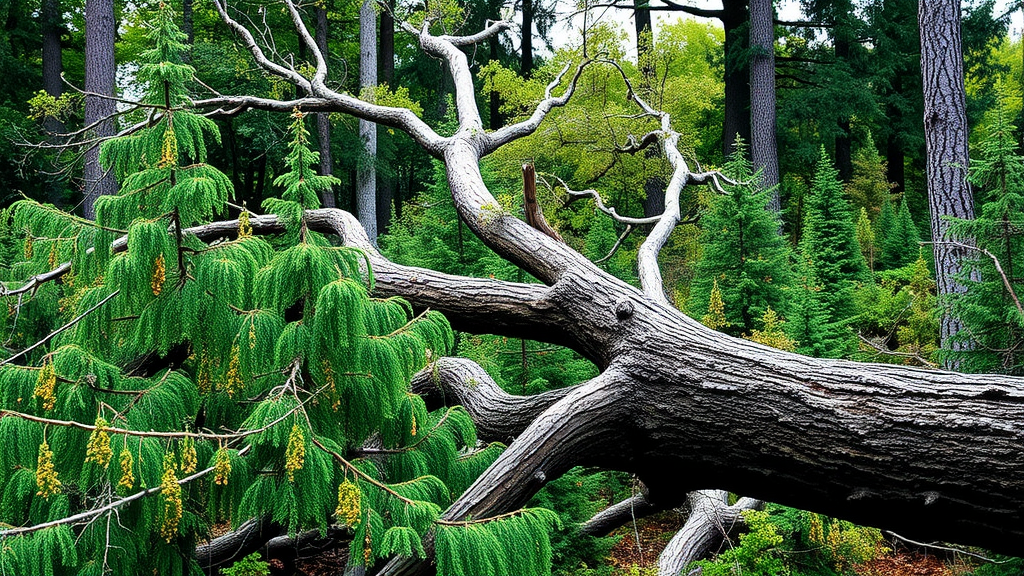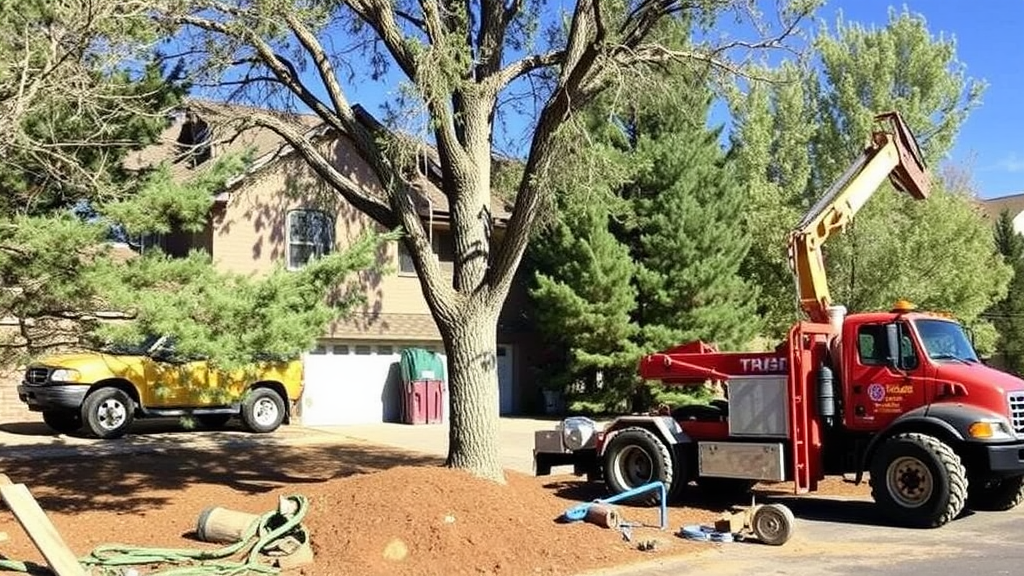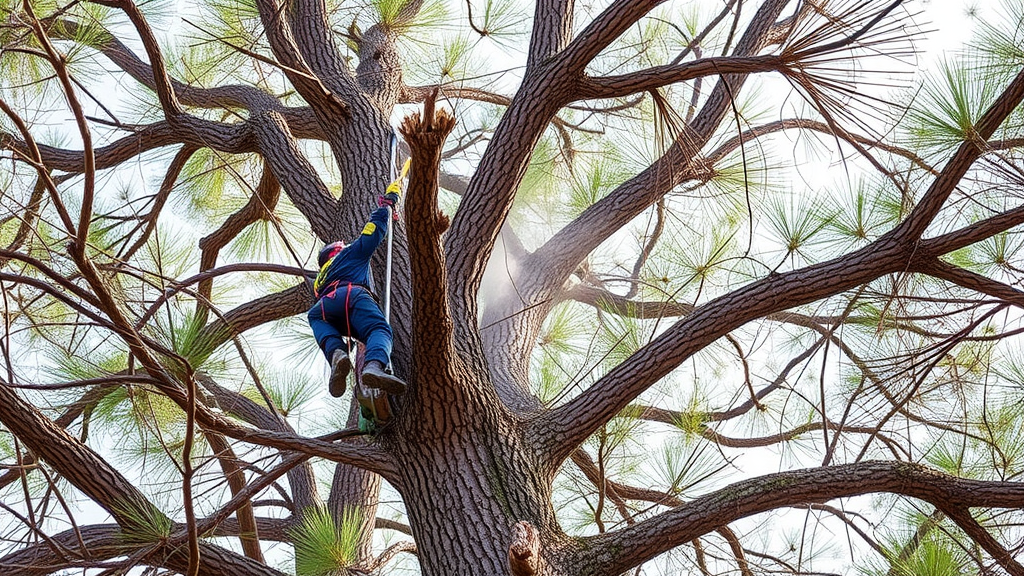The Single Best Strategy To Use For Utah Tree Removal Free Estimate



Name: Truco Services, Inc.
Address: 4640 Commerce Drive, Murray, Utah 84107
Phone: (801) 466–8044
Website: https://www.trucoservices.com/
Facebook: https://www.facebook.com/TruCoServices/
Twitter: https://x.com/truco_services/status/1810260222034038867
Linkedin: https://www.linkedin.com/company/truco-services
Youtube: https://www.youtube.com/@trucoservicesllc5407/videos
PitchBook: https://pitchbook.com/profiles/company/457843-06
Hours of Operation: Monday — Friday: 8am — 5pm; Saturday — Sunday: Closed.
Categories: Landscaping Services, including: Landscape Maintenance; Commercial Landscape Installation; Custom Landscape Design; Irrigation Services; Snow Removal, Tree Services, including: Tree Removal; Pruning; Arbor Care; Tree Trimming; Tree Installation; Emergency Tree Services; Outdoor Kitchen Designing and Installation; Lawn Care and Maintenance; Fertilizer Application (performed by licensed applicators); Holiday Lighting Installation;
Profile: TruCo Services, Inc. is a comprehensive general contracting company based in Murray, Utah, specializing in landscaping and concrete services. Established to cater to both residential and commercial sectors, TruCo Services focuses on delivering high-quality outdoor maintenance and improvement solutions for Landscaping; Concrete; Snow Removal; Tree Removal.
Read more here, here and here.
The Single Best Strategy for Getting a Utah Tree Removal Free Estimate
When considering tree removal in Utah, you might be curious about how to get an accurate free estimate without heavy commitments. The truth is, understanding the single best strategy can save you time and help you find reliable services without breaking the bank. This approach not only ensures you receive genuine quotes but also puts you in control of your options.
First, pinpointing the right service is essential. You want a tree removal company that values transparency. Start your research by browsing online directories and local listings. Looking for companies with solid customer reviews is a good practice. Pay attention to feedback that mentions free estimates. This ensures the businesses you’re considering will not only evaluate your needs without charge but also deliver a trustworthy experience.
Next, make contact! Gather a list of potential companies you want to reach out to and keep your questions ready. Here are a few points to consider when you’re reaching out:
- Service Offerings: Ensure they handle the specific type of tree removal you need.
- Experience: Ask how long they have been in business and their expertise in tree removal.
- Insurance: Confirm that the company has liability insurance to protect you and your property during the process.
- Qualifications: Inquire if their team is properly trained and licensed.
Once you’ve established initial contact, it’s crucial to arrange for a site visit. Most reputable companies will provide a free estimate on-site, which is invaluable. During the visit, the professionals will assess the tree’s condition, its location, and any potential hazards. They will also gauge accessibility for their equipment, which plays a crucial role in determining the cost. Ensure you’re available to ask questions and clarify details, as this demonstrates your seriousness about the project.
However, to truly maximize your free estimate experience, having clear expectations is vital. Here’s how you prepare:
- Identify Your Needs: Are you removing a tree that poses a safety hazard, or are you looking to enhance your landscaping? Understanding your intent will help convey this clearly during the assessment.
- Gather Background Information: If the tree has been a problem for a while, documenting its condition through photos can help when presenting your case to the estimator.
- Understand Local Regulations: Some areas have restrictions regarding tree removal or require permits. Researching local laws will help avoid any surprises during the process.
Following the site visit, you’ll receive a detailed estimate. The estimate should include labor, equipment, disposal costs, and any permits needed. Don’t hesitate to ask for clarification on any aspect. Understand the scope of work thoroughly before making a decision.
When reviewing multiple estimates, compare not only the prices but also the services offered. Sometimes the lowest quote might not include certain essential services, like stump removal or cleanup. Make sure every crucial detail is laid out in the estimates so that you can make an informed decision.
Moreover, communication is key. Some companies will follow up after providing estimates asking if you need any further assistance. Take advantage of this opportunity! You can use this moment to express your concerns or ask additional questions, further ensuring that you are comfortable with your choice.
Another important factor in finding the best company for tree removal in Utah is to continue engaging with your chosen professionals. Building a rapport can lead to further insights about tree care or even discounts on future services. Feel free to establish a working relationship that transcends a single transaction.
The single best strategy for getting a free estimate for tree removal in Utah revolves around selecting a dependable company, preparing adequately, and maintaining clear communication. By following this roadmap, you will not only secure an accurate and fair estimate but also pave the way for a smooth removal process.
Ultimately, you want to ensure that your tree removal is handled efficiently and safely, so keeping these pointers in mind will definitely lead to better outcomes.
Understanding the Importance of Tree Removal in Utah
Utah is known for its breathtaking landscapes and diverse wildlife, but with that beauty comes the responsibility of maintaining the environment, especially when it involves trees. Trees play a crucial role in our ecosystem; however, there are various reasons why tree removal becomes necessary. Understanding these reasons is essential for homeowners and communities alike.
Safety Hazards
One of the most critical reasons for removing trees is safety. Dead or dying trees can pose significant risks. Branches may fall unexpectedly, putting people and property in danger. Additionally, trees that grow too close to power lines can cause outages or start fires. If you notice a tree that appears unhealthy or is leaning dangerously, seeking professional help for removal is often the best choice.
Tree Health and Disease
Just like humans, trees can suffer from health issues. Diseases and pests can spread rapidly among trees, sometimes causing irreparable damage. If a tree is infected, it can weaken nearby trees and produce unwanted consequences for your landscape. Here are a few signs that a tree may need removal:
- Visible damage to the bark or branches.
- Discoloration of leaves or bark.
- Presence of fungal growth.
- Soft or decayed wood.
If you identify any of these symptoms, consulting a tree removal specialist can help prevent further harm to your garden or surrounding trees.
Space and Aesthetics
Sometimes, tree removal is more about space and aesthetics than health. As properties evolve, landscaping needs change. Overgrown trees can block light from reaching your garden or create an unkempt appearance. By removing certain trees, you can enhance the beauty of your property while also allowing other plants to thrive. This can be particularly beneficial if you are planning to redesign or expand landscaping features.
Root Damage
The root systems of trees can cause structural damage to your property. Roots can grow into foundations, roads, and pathways, leading to cracks and other issues. If you notice signs of root damage — such as cracks in your driveway or uneven pavement — it might be time to consider tree removal. Addressing root issues early can save you from expensive repairs down the road.
Environmental Benefits
While it might seem counterintuitive, tree removal can sometimes benefit the environment. When trees are removed responsibly, it offers opportunities for new growth. Young trees can be planted in their place, promoting a healthy ecosystem. New trees are often more resilient and can be chosen to better suit the local environment, which can improve biodiversity.
Professional Tree Removal Services
When considering tree removal, it’s essential to engage a professional service. They will evaluate the situation thoroughly before taking action. Here’s what you can expect when hiring a tree removal expert:
- Assessment: They’ll perform a detailed analysis of the tree’s health and its impact on the surrounding area.
- Expertise: Professionals have the necessary training and equipment to handle tree removal safely.
- Guidance: They can recommend whether to remove a tree or offer alternative solutions, such as pruning.
Always seek several estimates and choose a reputable company with positive reviews to ensure quality work.
Planning for the Future
After tree removal, planning for future landscaping is essential. Consider selecting new tree varieties that offer more benefits. Look for species native to Utah that will thrive in your environment. By doing so, you not only beautify your property but also contribute positively to the local ecosystem.
Understanding the importance of tree removal in Utah empowers homeowners to make informed decisions. Whether it’s for safety, health, aesthetics, or environmental benefits, knowing when and why to remove a tree can lead to a healthier, safer landscape for everyone.
Factors Affecting the Cost of Tree Removal Services
When it comes to tree removal services, many homeowners find themselves wondering about the potential costs involved. The price of removing a tree can vary greatly, influenced by several key factors. Understanding what affects the cost can help you budget accordingly and avoid any unexpected expenses. Below are some of the most significant elements that contribute to the overall price of tree removal.
Tree Size
The size of the tree is one of the primary factors that will determine the cost of removal. Typically, larger trees require more labor and equipment to remove, leading to higher costs. Here’s how size generally impacts pricing:
- Small Trees (up to 30 feet): These can range from $100 to $400.
- Medium Trees (30–60 feet): Expect costs between $400 and $1,000.
- Tall Trees (over 60 feet): Removal can cost anywhere from $1,000 to $2,500 or more.
Tree Condition
The health and condition of the tree also play an important role. A healthy tree can be removed more easily, but if a tree is dead or diseased, it might pose additional risks to the workers. They may need special safety measures, which can increase the cost. Here are some considerations:
- Healthy Trees: Standard rates apply.
- Damaged Trees: Additional precautions may raise costs.
- Dead or Diseased Trees: Potentially higher costs due to safety concerns.
Location and Accessibility
Where the tree is located significantly influences the removal cost. If the tree is in an easy-to-reach area, the labor involved is less intense. However, if the tree is situated in a difficult spot, such as near power lines or over a structure, removal will be trickier and more expensive. Factors impacting location include:
- Proximity to Structures: Trees near homes or buildings require extra caution.
- Accessibility: Limited access areas may require specialized equipment.
- Urban vs. Rural Areas: Urban settings often have higher costs due to congestion.
Disposal of Waste
After the tree is cut down, there is the matter of disposal. Some companies include this in their pricing, while others charge extra. Here’s what to consider:
- Chipping Services: Shredding branches and leaves typically incurs an additional fee.
- Hauling Away: If you need the trunk and limbs removed from your property, this can add to your cost.
- Stump Grinding: If you want the stump removed, expect a significant increase in your total bill.
Seasonality
The time of year can also impact the cost of tree removal. In peak seasons, such as spring or summer, prices may rise due to high demand. Conversely, removing trees in the winter can sometimes be less expensive. Seasonal factors that affect costs include:
- Peak Season: Higher demand can lead to increased pricing during spring and summer.
- Off-Season Discounts: Some companies may offer lower prices during winter months.
Experience of the Tree Removal Company
The level of experience and expertise of the service provider affects pricing as well. Established companies with good reputations may charge more for their services, reflecting their quality and reliability. Considerations include:
- Licensed and Insured: Hiring a fully insured company may cost more but is safer.
- Customer Reviews: Researching company reviews can justify higher pricing based on satisfaction.
The cost of tree removal services is affected by various factors, such as tree size, condition, location, waste disposal, seasonality, and the company’s experience. By understanding these elements, you can better estimate your potential costs and choose the right service for your needs. Remember, investing in professional tree removal not only protects your property but also enhances the overall aesthetics of your landscape.
Signs That Indicate It’s Time for Tree Removal
When it comes to maintaining your yard, trees play a crucial role. However, sometimes trees can become problematic and may need to be removed. Knowing the right signs that indicate it’s time for tree removal can help prevent accidents, property damage, and promote safety in your surroundings.
One of the most significant indicators is when the tree is visibly dying or dead. Check for the following signs:
- Brittle Branches: If the branches break easily, this can signify decay.
- Bark Damage: Look for cracks, splits, or peeling bark. A healthy tree shouldn’t show these signs.
- No Leaves: A tree that fails to sprout leaves in the spring may be dead.
Another critical factor to observe is the tree’s structural integrity. If you notice instability, it may indicate the tree is compromising your safety. Look for:
- Lean: Trees that lean heavily to one side can fall during a storm or high winds.
- Hollow Trunk: A significant cavity in the trunk can suggest weakness and potential failure.
Pests and diseases can also take a toll on your trees. If you spot any of these concerns, removal may be your best course of action:
- Insects: Check for signs of insect infestations, such as holes in the wood or visible bugs.
- Disease: Fungal growth, oozing sap, or unusual leaf discoloration can indicate a sick tree.
Sometimes, the location of the tree itself makes it necessary for removal. If a tree is too close to your home or utility lines, it poses a risk that shouldn’t be ignored. Consider these aspects:
- Proximity to Structures: Trees that threaten to grow into your home or garage must be handled cautiously.
- Overhanging Power Lines: Trees that reach or touch power lines can cause electrical issues.
Additionally, if the roots of the tree are damaging your yard or surrounding infrastructure, it’s time to take action. Root damage can lead to:
- Sidewalk Cracking: Roots may lift up sidewalks and driveways, creating hazards.
- Foundation Issues: Roots that extend near your house may compromise the foundation.
If you experience strong storms or harsh weather conditions, you may want to assess the trees around you more frequently. After a storm, inspect your yard for:
- Broken Limbs: If you see large branches or limbs broken but still attached, they may be a hazard.
- Uprooting: Trees that have moved from their original position can indicate root issues or heightened risk.
When you notice any of these signs, it’s wise to seek a professional opinion. A tree specialist can assess the condition of your trees and give you the best advice on whether removal is necessary. Regular maintenance and proactive assessments are recommended to keep your trees healthy. Remember, healthy trees not only beautify your yard but also provide valuable shade and clean air.
Taking action when a tree is in distress can save you trouble later. Tree removal should always be conducted safely and responsibly, ensuring no further damage to your property occurs. Be mindful, stay observant, and prioritize safety in your outdoor space.
Choosing the Right Tree Removal Service in Utah
When it comes to maintaining your property in Utah, one of the most crucial aspects is ensuring the health and safety of the trees around you. Sometimes, trees may need to be removed due to damage, disease, or simply because they pose a threat to your home or landscaping. The right tree removal service can make all the difference, not only in the efficiency of the job but also in ensuring safety and environmental responsibility.
Choosing a tree removal service in Utah can be daunting. There are many companies out there, and not all are created equal. Here are essential factors to consider when selecting the right one:
- Credentials and Certification: Verify that the company is licensed and insured. This protects you from liability should an accident occur during the removal process. Look for certifications from recognized organizations such as the International Society of Arboriculture (ISA).
- Experience: Experience plays a significant role in effective tree removal. Companies with years of experience are likely to have encountered a wide range of tree-related issues. Ask how long the company has been in business and check for any references or reviews.
- Free Estimates: A reputable service will offer a free estimate. This gives you a clear picture of the costs involved and allows you to compare options among different providers. Be cautious with companies that provide very low quotes — extra costs can often sneak in later.
- Equipment and Techniques: The best services use the latest equipment and techniques. Inquire about the tools and methods they plan to use for the job. Efficient techniques will ensure that the tree is removed safely without damaging surrounding property.
- Safety Protocols: Safety should always be a priority when removing trees. Ensure the company has a solid safety policy and uses personal protective equipment (PPE) for their workers. You want a team that takes the necessary precautions seriously.
- Cleanup Services: Tree removal doesn’t end with cutting down the tree. Ask if the service includes cleanup and disposal of wood debris. This can save you time and effort after the job is done.
- Environmental Responsibility: In today’s world, understanding how a service handles environmental issues is important. Ask how they dispose of the trees they remove and if they have plans for recycling materials.
By knowing these key factors, you can start narrowing down your list of potential tree removal services. Never rush your decision; take the time to gather information and truly evaluate your options.
After you have made a list of potential companies, it’s time to dig deeper into their reliability and quality of service.
First, look for online reviews. Websites like Google and Yelp can provide great insight into a company’s reputation. Pay attention to both positive and negative reviews. This can help you gauge overall customer satisfaction and the experiences other homeowners have had.
Next, consider asking for referrals from friends or family. Word-of-mouth recommendations can provide some of the best leads to trustworthy service providers. A referral from someone who has had a good experience can give you peace of mind when making your choice.
Another important step is to ask questions. When you contact a company, prepare a list of questions that covers everything from pricing to their approach to tree removal. This not only gives you an idea of their professionalism but also helps clarify any concerns you might have about the process.
Trust your instincts. If something feels off during your interactions with a tree removal service, or if a company seems unreliable, it’s okay to continue your search until you find the right fit.
In Utah, the right tree removal service can help you maintain the beauty and health of your landscape while ensuring safety. By considering credentials, experience, equipment, and reputation, you will be well-equipped to make the best choice. A well-informed decision will lead you to a reliable partner who respects your property and the environment. Take the time to research and ask the necessary questions, and you’ll find the service that meets your needs and expectations.
Key Takeaway:
When it comes to tree removal in Utah, understanding how to obtain a free estimate is the single best strategy to ensure both safety and cost-effectiveness. Many homeowners often underestimate the importance of tree removal, which can be crucial in maintaining property safety, aesthetic value, and promoting overall landscape health. In particular, Utah’s unique climate can lead to specific tree issues, making timely removal essential.
One of the first steps in securing a free estimate for tree removal is to recognize the factors affecting the costs. These can vary significantly based on tree height, location, species, and condition, as well as other variables like stump grinding and debris removal. By understanding these factors, you can better communicate your needs to tree service professionals and ultimately receive more accurate estimates.
Moreover, there are specific signs that indicate it’s time for tree removal. These signs can include dead or dying branches, significant bark damage, leaning trees, and any signs of decay. Promptly addressing these issues not only protects your property but also enhances the safety of those around you.
Choosing the right tree removal service in Utah is equally important in securing a favorable outcome. It’s vital to do your research and select a company that is licensed, insured, and has positive customer reviews. Engaging with multiple providers will give you a well-rounded perspective of pricing and services available. When obtaining a free estimate, don’t hesitate to ask questions, seek clarity on the procedures, and request a breakdown of potential costs.
The key takeaway is that obtaining a free estimate for tree removal in Utah hinges on understanding the landscape’s unique challenges and being proactive in recognizing tree issues. Informed decision-making, combined with thorough research, will ensure you find a reliable service provider that meets your needs efficiently and effectively. With the right information and actions, you can ensure your landscape remains safe and visually appealing.
Conclusion
When it comes to tree removal in Utah, knowing the best strategy for obtaining a free estimate is crucial for homeowners. Understanding the importance of tree removal not only safeguards your property but also enhances the aesthetic and ecological value of your landscape. By being aware of the factors affecting the cost of tree removal services, you can better prepare yourself for potential expenses and budget accordingly.
It is important to recognize the signs that indicate it’s time for tree removal, such as dead branches, disease, or structural instability. These signals can help you act quickly and avoid further damage to your property or surrounding environment. Choosing the right tree removal service is equally essential. A reputable company will provide clear communication, professional expertise, and thorough assessments tailored to your needs.
By leveraging these insights, you’re equipped to make informed decisions about tree removal in Utah. Whether it’s the safety of your home, the health of your trees, or the overall beauty of your landscape, prioritizing professional assistance while being aware of your options reflects a responsible approach to tree care. Always remember to request a free estimate and consider multiple service providers to ensure you find the best value and quality for your specific situation. Taking these steps will lead to peace of mind and a better outdoor environment for you and your family.
If you need a tree service in Utah, you can call:
Truco Services, Inc.
4640 Commerce Drive
Murray, Utah 84107
(801) 466-8044
https://truetreeservices.com/



